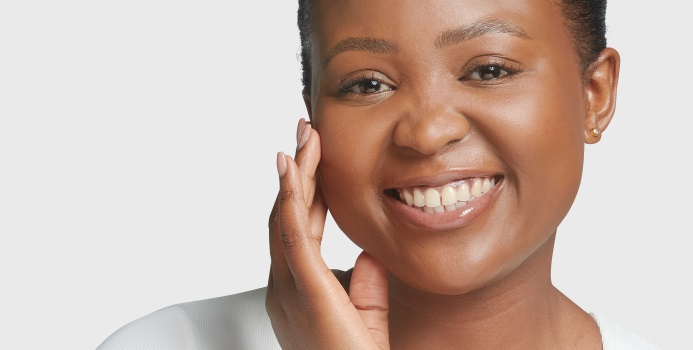Acne (Pimples)

Acne is characterized by the presence of pimples, blackheads, whiteheads, and sometimes deeper cysts on the face, back, and chest.
Acne is a prevalent dermatological condition that affects millions of individuals worldwide. It primarily occurs during adolescence but can persist into adulthood. Lesions form when pores and hair follicles become clogged with oil and dead skin cells, leading to inflammation and bacterial growth. Effective management and treatment can significantly improve the appearance of the skin and the individual’s quality of life.
Signs and Symptoms
The primary signs and symptoms of acne include:
- Papules: small, red, raised bumps on the skin
- Pimples: Red, tender bumps with white pus at the tips.
- Blackheads: Open clogged pores that are darkened due to oxidation.
- Whiteheads: Closed clogged pores.
- Cysts: Large, painful, pus-filled lumps beneath the skin.
- Nodules: Solid, painful lumps beneath the surface of the skin.
Pathophysiology/Development of Acne
The development of acne involves several key factors:
- Follicular Hyperkeratinisation: This is the excessive production of keratin (a protein in the skin) that leads to the thickening of the layer of cells that line pores and hair follicles, resulting in clogged pores. This process is often made worse by hormonal changes, particularly androgens, which stimulate sebaceous glands to produce more oil2.
- Increased Sebum Production: Hormonal fluctuations, particularly during puberty, menstruation, and pregnancy, increase the activity of the sebaceous glands, which then produce more oil (sebum). This excess sebum combines with dead skin cells and becomes trapped in hair follicles.
- Cutibacterium acnes: This bacterium normally lives on the skin but can multiply rapidly in clogged pores. The overgrowth of C. acnes contributes to inflammation and the formation of acne lesions4.
- Subclinical Inflammation: Acne is often accompanied by subclinical inflammation, which refers to low-level, chronic inflammation that is not always visible on the surface of the skin but contributes to acne development and worsening. This underlying inflammation can lead to the formation of comedones (blackheads and whiteheads) and contribute to the severity of inflammatory lesions such as papules (small bumps) and pustules (papules filled with pus)5.
- Genetic and Environmental Factors: Genetics play a significant role in the predisposition to acne, influencing sebum production and skin response to bacteria. Environmental factors such as diet, stress, and exposure to pollutants also impact the severity and frequency of acne outbreaks6.
Types of Acne
There are several types of acne, each presenting differently:
- Comedonal Acne: Characterized by blackheads (open comedones) and whiteheads (closed comedones).
- Inflammatory Acne:
- Includes papules: Small, red, tender bumps without puss
- Pustules: Similar to papules but with puss at their tips
- nodules,
- cysts.
- Nodulocystic Acne/Cystic Acne: Severe form involving large, painful cysts under the skin
- Acne Conglobata: A severe form of nodulocystic acne with interconnected nodules and abscesses, leading to scarring8
- Acne Mechanica: Triggered by physical factors like friction, pressure, or heat, often seen in athletes9
Understanding the type of acne is crucial for determining the appropriate treatment strategy.
Trigger Factors
Several factors can trigger or worsen acne, including:
- Hormonal Changes: Particularly during puberty, menstruation, or pregnancy.
- Diet: High glycemic index foods and dairy products may exacerbate acne.
- Stress: Can increase hormone levels that may lead to acne flares.
- Cosmetics: Oil-based products can clog pores.
- Medications: Some drugs, like corticosteroids and lithium, can cause acne.
Common Treatments for Oily Acne-Prone Skin
Topical Treatments12
- Benzoyl Peroxide: Reduces bacteria and has a mild drying effect.
- Salicylic Acid: Salicylic acid helps to exfoliate the skin and unclog pores. It is often used for treating comedonal acne and can be found in various over-the-counter products
- Retinoids: Normalize follicular epithelial desquamation (shedding of the top layer of the skin) and have anti-inflammatory properties.
- Antibiotics: Reduce Cutibacterium acnes and inflammation.
Systemic Treatments13
- Oral Antibiotics: Such as doxycycline and minocycline to reduce bacteria and inflammation.
- Hormonal Treatments: Birth control pills and anti-androgens to regulate hormone levels.
- Isotretinoin: A potent retinoid for severe, treatment-resistant acne.
Advanced Procedures14
- Chemical Peels: Use of acids to exfoliate and reduce acne lesions.
- Laser Therapy: Targets bacteria and reduces inflammation.
- Extraction: Manual removal of comedones by a dermatologist.
Skincare15
- Cleansers: Non-comedogenic (does not block pores and hair follicles) and oil-free to remove excess oil and dirt.
- Moisturizers: Oil-free and non-comedogenic to prevent skin dryness.
- Sunscreen: Non-comedogenic to protect the skin from UV damage.
When to See a Doctor
Consult a Health Care Practitioner (Nurse, pharmacist, doctor, dermatologist):
- Over-the-counter treatments are ineffective after several weeks.
- Acne is severe or widespread.
- Acne leads to significant emotional distress or scarring.
- There are signs of infection, such as excessive redness, pain, or pus.
Impact on Quality of Life
A recent study by Eucerin highlights these impacts, emphasizing that effective management of acne is crucial for improving overall well-being17.
Acne can significantly impact an individual’s quality of life, leading to18:
- Emotional Distress: Anxiety, depression, and low self-esteem.
- Social Withdrawal: Avoidance of social activities due to embarrassment.
- Impact on Daily Activities: Difficulty with normal daily tasks due to discomfort or self-consciousness.
- Scarring: Long-term physical reminders that can affect self-image.

BUY NOW
Last reviewed: 14 August 2024
Related Brochures

dry-skin

bacterial-skin-infections
